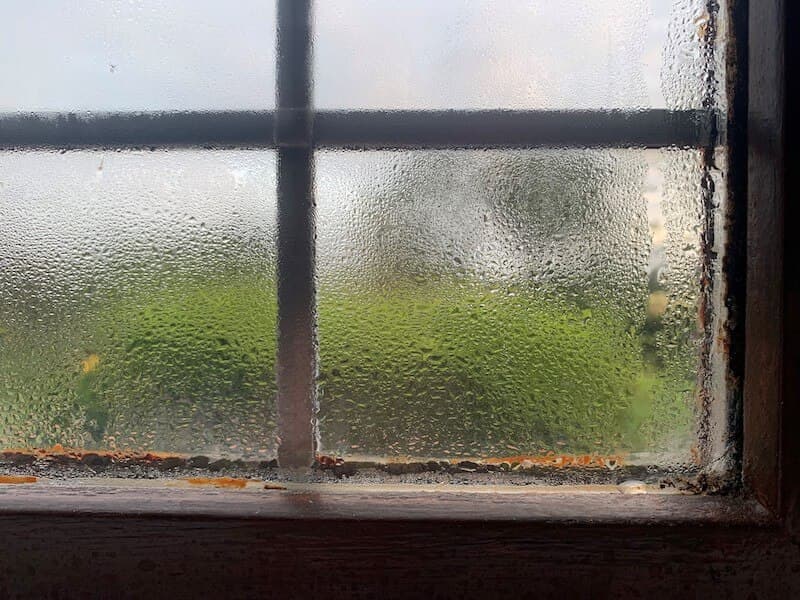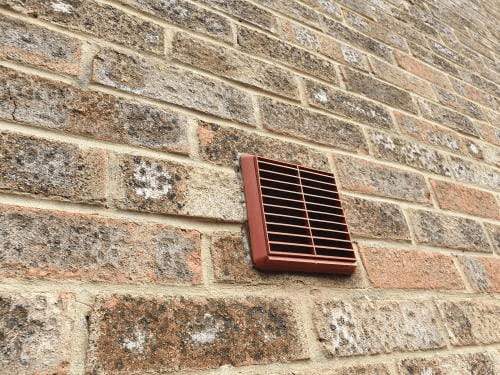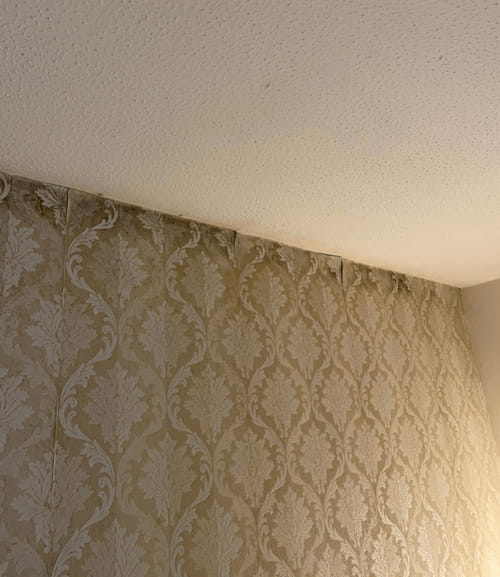Help & Advice Articles, Videos and How-to-Guides
Filter Articles

Student Guide to Damp
As a student, you are unlikely to be looking for luxury apartments or new builds. You want to rent an affordable student house that is big enough for all your friends and still leaves you with money leftover.
When looking at larger, more affordable houses in student areas, you are likely to find houses that have been neglected by landlords. The amount of neglect can vary dramatically.
There will be certain things you are willing to compromise on when choosing a property. However, there are major issues like damp that can end up being bad for your health, and damage your clothes and possessions.
It may seem boring to discuss damp and hear precautionary tales, but trust us, living in a damp property is a stress you can do without. Damp can negatively impact your quality of life and study, and trying to resolve damp issues with letting agents and landlords can result in high levels of stress. Therefore, it’s much better to spot damp issues in the viewing stages before signing up to a property.
This guide is split in two – one section helps you spot damp and avoid damp properties, and the second is for those of you who are already living in damp properties and want to take action to get it sorted.
How to spot damp before moving in
What to do if your student house has damp
As specialists in dealing with damp, Permagard want to help you spot damp and judge how bad it is. This way you can make an informed decision when it comes to choosing a student property.
How to spot damp when viewing a student house
When you are looking around a potential property, there are a few key areas to check for the telltale signs of damp. Problems with damp aren’t always found until it’s too late, but this should help.
It may seem like common sense, but if there are current tenants in the property when you are shown around, then ask the question: “Have you had any problems with damp?” Anyone who has suffered the effects of damp will want to warn you against it. Also, don’t let the letting agent rush you around the property. Take your time and perform the checks detailed below.
There are different types of damp that can affect student properties. We will take you through how to spot each type with pictures and a basic summary:
Condensation in student properties
Condensation is easy to spot, especially if the property still has occupants. It occurs when warm air, heavy with moisture, comes into contact with a cool surface. When the two meet, the warm air cools and releases its moisture which then builds up.
Signs of condensation:
- Steamed-up windows and puddles on the windowsills.
- Black spotty mould on walls and ceilings. This is particularly common in bathrooms. Black mould often gathers in the corners of rooms so make sure you look here.
- Walls that are damp to touch – don’t be afraid to put your hand on all walls as you look around.
- Damp, peeling wallpaper – look at the top and bottom corners of wallpapered rooms.
- Musty smell – you can usually smell damp.
Condensation looks like this:

What Causes Condensation?
Condensation is usually more of a problem when there are people in a property, as it is caused by daily activities such as:
- Showering - The airborne moisture buildup from hot showers especially can build up very quickly, and is the main cause of condensation in bathrooms
- Drying washing - Using heat to dry washing in an enclosed area will fill the air with large amounts of moisture. This will settle on cooler surfaces.
- Cooking - Cooking, but boiling in particular, releases a lot of steam and warm moisture into the air.
If the property is already empty when you view it, you will need to make a judgement based on any evidence of black mould and damage to wallpaper.
If you are moving into a larger property with several people, then the above activities will occur more frequently and produce significantly more moisture. This will increase the chance of problem condensation.
Look for signs of house ventilation
Condensation can be controlled by adequate ventilation. You should check the property for the presence of house ventilation systems. It’s best to focus on the problem rooms like the bathroom / shower room and the kitchen.
Locally installed bathroom or kitchen humidity-controlled extractor fans will help minimise condensation. You may also find more basic ventilation such as:
- Passive Vents such as our Perma-Vent
- Positive input pressure (PIV) units
- Heat recovery ventilation systems
These images show our PermaVent, which is an example of a passive vent:


Rising Damp in student properties
Rising damp is a relatively rare form of damp, but is a major problem. It is caused by moisture rising up through the walls and salts then being deposited on the internal walls. It is these salts and tidemarks that are the tell-tale signs of rising damp. Rising damp is hard to diagnose, so you may have to consider if you are willing to take the risk based on what you can see.
Common Signs of Rising Damp:
- A tidemark on your wall – this line of white salts is formed by the evaporation of the groundwater.
- White fluffy salts on the surface
- Damp on the lower half of your walls
- Damage to skirting boards
- Crumbling or blown plaster
- Peeling paint or wallpaper
- Musty, damp smell
What rising damp looks like:
Rising damp tidemarks can look like this:

Salt Crystals can look like this:
Penetrating Damp in student properties
Penetrating damp occurs when water from outside makes its way inside. This is usually down to a building fault such as leaky guttering and downpipes, leaking pipes or damage to the roof. You will tend to find these issues with older buildings, and they get worse during wet weather.
Ask to be shown the outside of the property during your viewing so you can look for external evidence of building faults. Look out for obvious faults with gutters and downpipes e.g. are there broken joints? Can you see grass growing out of the guttering? Also check for faults with the walls such as damaged pointing, damaged pebbledash, cracks or holes in the mortar joints.
Common signs of penetrating damp include:
- Damp and blotchy stains on plasterwork
- Cracks or holes in mortar joints, render and masonry surfaces
- Wet patches both internally and externally
What Penetrating Damp Looks like:


Common signs of Damp Cover Up
Some landlords will attempt to tackle the damp problem superficially without getting to the root cause of the problem. It could be a case that they have simply painted over the damp. The following signs can suggest an attempt to cover up the damp:
- Incense or room fresheners to cover up the smell of damp
- New paint - an obvious choice for those looking to temporarily conceal damp
- New wallpaper - can be used to cover both cracks and damp
Already renting a student house with damp problems
You may have started to notice signs of damp in your current student accommodation. It may be that a pre-existing damp condition that was successfully concealed has now been exposed. The sudden evidence of damp may also be down to a lack of adequate home ventilation manifesting in signs of damp.
Who is responsible for dealing with damp problems in a student house?
It is important to tackle the damp before it causes any damage to your possessions and health. This involves finding out what is causing the damp, who is responsible for dealing with it, and then taking action.
The most common cause of damp is condensation (see the condensation section above). If the damp is caused by condensation and your property has adequate ventilation - windows that open - then the landlord is unlikely to be responsible. In fact, as the tenant, you will be responsible. However, if the damp is not caused by condensation, then your landlord may well be responsible.
How to reduce condensation in a student house
Reducing condensation in your student house can be done straight away and usually does not come at a large cost. By reducing condensation, you are in a better position to judge if there are any other forms of damp that need to be fixed by your landlord.
- Open windows to allow air to circulate. Ideally, you should cross-ventilate by opening windows at opposite sides of the house.
- Keep heating on at a regular low temperature - preventing rapid changes in the temperature will help reduce condensation. Also, try and make sure the heating is on throughout the house so you don’t get cold spots.
- Don’t dry your washing indoors if possible. If you can, dry your clothes outside or at a laundrette. If you have no option but to dry them indoors, then do so in the bathroom with the door closed and the window open or fan on. In no circumstances should you dry clothes directly on hot radiators.
- Create less moisture – put lids on pans when cooking, and add cold water before hot water when running a bath and doing the washing up.
- Keep doors shut to stop moist air spreading throughout your home – in particular the kitchen and bathroom doors.
- Use all extractor fans that you have, especially in the bathroom and kitchen.
- Correctly vent your tumble dryer – if you are lucky enough to have a tumble dryer then make sure it is vented correctly to the outside. Self-condensing dryers do not require to be vented outside.
- Avoid blocking ventilation – check that there is nothing preventing or reducing available ventilation such as covering air vents and closing ventilators.
Documenting damp problems
It’s helpful to document damp issues from the outset just in case you need to provide evidence at any stage:
- Take photos of any signs of damp as evidence – use a date stamp on the photographs if possible. If it gets worse after rain or the condition progresses, then take new photographs.
- Keep a diary and email records of who you contacted and when about the issues, including as much detail as possible.
- Try and get written correspondence from the landlord or student letting agents. Phone conversations can be hard to document.
Condensation and mould advice for student tenants
Your rights as tenants depend on the root causes of the damp. As a topline overview, if the damp is caused by condensation, then it will be hard to make the landlord take action.
Landlords are likely to blame damp on condensation and your activities. This is because in most cases the type of mould you have is related to condensation. In a student home you are likely to have multiple people taking showers, drying clothes indoors, cooking at separate times. These activities are the source of so much water.
The landlord is likely to argue that you as the tenant are responsible. They will also state that in order to reduce condensation you need to leave the heating on even when you are not at home (painful for those on a tight budget), ventilate as much as possible and never dry clothes indoors. You can even be liable for damage caused by condensation.
If the damp is a result of a landlord’s failure to properly maintain the premises, then they may well be in breach of the Residential Tenancy Agreement.
Is a landlord responsible for damp in a student property?
Dampness may be the responsibility of the landlord, particularly if it is due to building faults such as the walls or roof, structural defects such as inadequate ventilation, poor insulation or faulty heating. They may be held responsible under the Housing Health and Safety Rating System or under their statutory repairing covenants in section 11 of the Landlord and Tenant Act 1985.1.
In summary, the landlord is responsible for repairs as a result of damp if:
- the damp is caused by a structural defect in the property;
- the property lacks damp proofing;
- there is a leak (e.g. in the roof);
- there is inadequate insulation, heating or ventilation causing condensation.
We've put together a guide to tackling damp and problem condensation for landlords, outlining their options.
Check Your Tenancy Agreement
There may be terms in your tenancy agreement that mean your landlord is responsible for dealing with dampness, regardless of the cause.
What to do if your landlord is responsible for a damp problem&
If you have investigated the damp issue and are sure that it is not due to factors within your control, then you must raise it. During this process, make sure to make a record of the contact you have with your landlord and what was said with each communication. If the issue must be taken to authorities as a dispute, a clear record of communication will act as evidence in your favour. If you believe that your landlord is responsible for a damp issue, then follow these steps:
1. Contact Landlord
Inform your landlord or letting agent of any damp problems as soon as possible. You should follow up by writing formally to them (be polite and professional) detailing the problem and requesting action is taken.
Once your landlord is made aware that your house is experiencing damp issues, they should take action to fix the problem as quickly as possible.
2. Health and Environmental Services
If your landlord doesn't fix the damp problem, you can contact your local council’s environmental health department to inspect the house. Shelter has some more information on asking the council for help in housing matters.
An officer will attend to inspect your property, measure the level of damp and identify the source. If the damp levels are deemed to be detrimental to health, they will then notify the landlord of deficiencies that they are responsible for e.g. a problem with leaking pipes or structural defects. At this stage, this is an informal request.
If the disrepair is serious enough or the landlord refuses to complete repairs, the council will serve them with a legal notice to carry out repairs and maintenance work. If repairs are still not carried out, they can fine them or take court action.
WARNING: According to Citizens Advice, a private landlord may decide to evict a tenant rather than do repair work. Make sure you know whether you're at risk of eviction before taking action.
3. Court Action
Some tenants decide to take their landlords to court because they've failed to deal with the damp issues. This can be costly, time-consuming and it is down to you to prove that the damp is the landlord's responsibility. As a student on a short-term contract, this is not recommended, and you should only take it as a last resort.
Permagard: Helping People Solve Damp Problems
If you are a student and want to find out about our products to deal with mould growth and condensation then explore our site and guides. If you own a student property and want to fix a damp problem, then contact us today to discuss our full range of damp proofing products.
Products
If you’ve been told to remove the mould and that it’s your fault, save yourself the hassle and go straight for professional mould washes. In bathrooms, you can use a Mould Wash Concentrate to get rid of mould. You can also look at our other anti-mould treatments.
Other Resources
Citizens Advice on Dampness and Landlord Responsibilities
Which? on Renting Student Houses with Damp
Permagard’s Big Damp Guide





